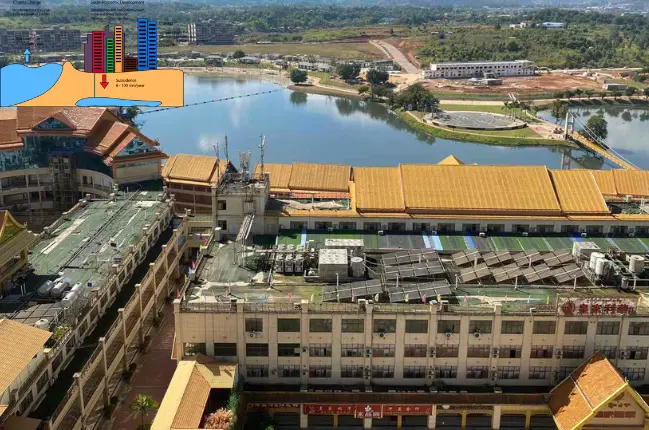In recent years, China’s Cities has experienced rapid urbanization, with millions flocking to its cities in search of better opportunities and a higher standard of living. However, this influx of people, coupled with intensive industrialization and construction, has had unintended consequences: sinking cities. Subsidence, or the gradual sinking of land, is a growing problem in many urban areas across China’s Cities, posing significant risks to infrastructure, the environment, and the lives of millions of people. In this blog post, we delve into the causes, consequences, and potential solutions to this pressing issue.
The Causes of Subsidence about China’s Cities
Subsidence in China’s Cities is primarily driven by two factors: excessive groundwater extraction and the construction of large-scale infrastructure projects.
- Groundwater Extraction: China is the world’s largest consumer of groundwater, with millions of wells drilled to meet the needs of agriculture, industry, and urbanization. However, excessive pumping of groundwater has led to the compaction of underground aquifers, causing the land above to sink. This phenomenon is particularly pronounced in northern China, where water scarcity is a pressing issue.
- Infrastructure Construction: China’s Cities ambitious infrastructure projects, including skyscrapers, highways, and high-speed railways, often require extensive excavation and the displacement of large volumes of earth. The removal of underground material can destabilize the surrounding soil layers, leading to subsidence over time.
The Consequences of Subsidence
The sinking of cities has far-reaching consequences that threaten both human lives and the environment.
- Infrastructure Damage: Subsidence can damage roads, buildings, pipelines, and other critical infrastructure, leading to costly repairs and disruptions to daily life. In extreme cases, buildings may become uninhabitable or collapse entirely, putting lives at risk.
- Flooding: As the land sinks, drainage systems become less effective, increasing the risk of flooding during heavy rainfall or storm surges. This poses a significant threat to public safety and exacerbates property damage.
- Environmental Degradation: Subsidence can also have adverse effects on the environment, such as the loss of wetlands, damage to ecosystems, and saltwater intrusion into freshwater sources. These environmental impacts further exacerbate the challenges faced by local communities.
- Economic Losses: The economic costs of subsidence are substantial, ranging from direct damage to infrastructure to indirect impacts on property values, insurance premiums, and agricultural productivity. Furthermore, the long-term implications of subsidence may deter investment and hinder sustainable development efforts.
Addressing the Problem
Addressing subsidence requires a multifaceted approach that combines regulatory measures, technological solutions, and community engagement.
- Regulatory Measures: Governments at the national, provincial, and municipal levels must implement regulations to limit groundwater extraction and enforce sustainable water management practices. This may include quotas on groundwater pumping, the implementation of water pricing mechanisms, and the promotion of water-saving technologies in agriculture and industry.
- Technological Solutions: Innovative technologies such as satellite monitoring, geospatial mapping, and ground-based sensors can help authorities detect and monitor subsidence in real-time. This data can inform urban planning decisions, identify high-risk areas, and facilitate early warning systems for potential disasters.
- Infrastructure Adaptation: In areas prone to subsidence, infrastructure design and construction practices should take into account the geological conditions and potential risks. This may involve using specialized building techniques, such as pile foundations or soil stabilization methods, to mitigate the effects of subsidence on structures.
- Public Awareness and Engagement: Educating the public about the causes and consequences of subsidence is essential for fostering community resilience and encouraging sustainable behaviors. Public outreach campaigns, community workshops, and school programs can raise awareness about water conservation, urban planning, and disaster preparedness.
Conclusion
The sinking of China’s cities is a complex and urgent problem that requires coordinated action at all levels of government, as well as active participation from communities and industries. By addressing the root causes of subsidence, investing in innovative technologies, and fostering public awareness, China’s Cities can mitigate the risks posed by sinking cities and build a more sustainable future for its urban population. Failure to act decisively could have devastating consequences for millions of people and undermine the country’s long-term economic and environmental stability.


